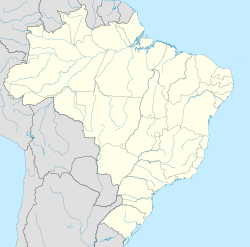| Itaguyra Temporal range: Upper Triassic, | |
|---|---|
| Scientific classification | |
| Domain: | Eukaryota |
| Kingdom: | Animalia |
| Phylum: | Chordata |
| Clade: | Dinosauria (?) |
| Clade: | † Ornithischia (?) |
| Family: | † Silesauridae |
| Genus: | † Itaguyra Paes Neto et al., 2025 |
| Species: | †I. occulta |
| Binomial name | |
| †Itaguyra occulta Paes Neto et al., 2025 | |
Itaguyra (meaning "stone bird") is an extinct genus of dinosauromorphs allied with taxa traditionally regarded as "silesaurids" (possibly the earliest ornithischian dinosaurs). It is known from the Late Triassic (Carnian age) Santa Cruz Sequence of the Santa Maria Supersequence of Brazil. The genus contains a single species, Itaguyra occulta, known from two isolated pelvic bones.



